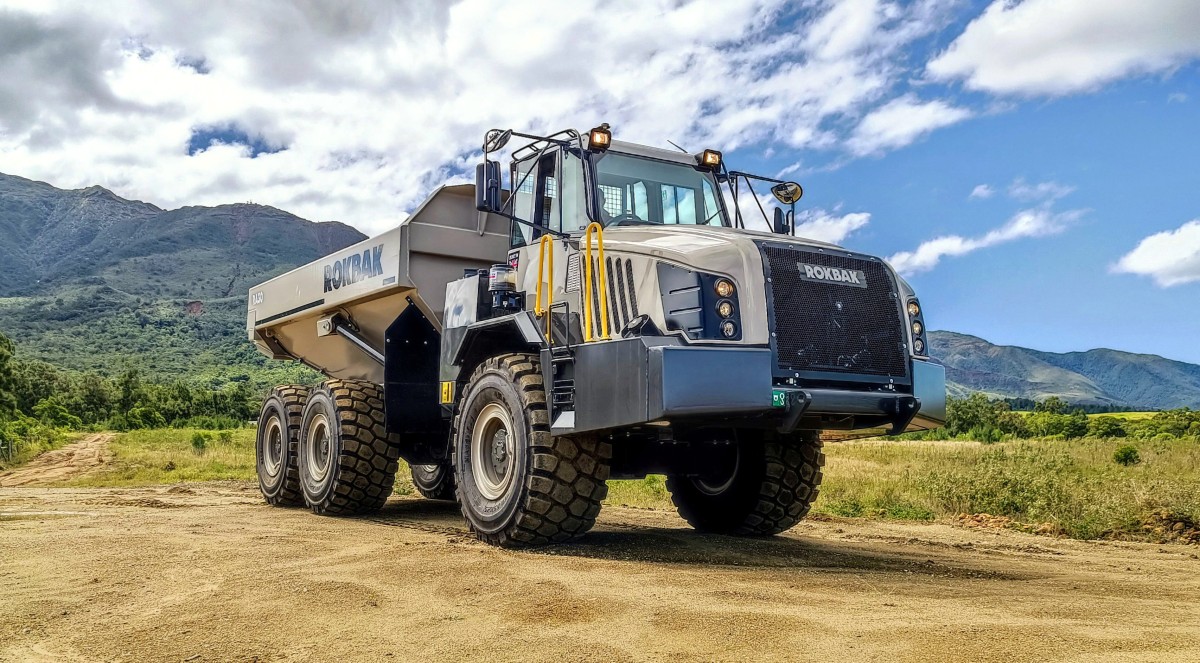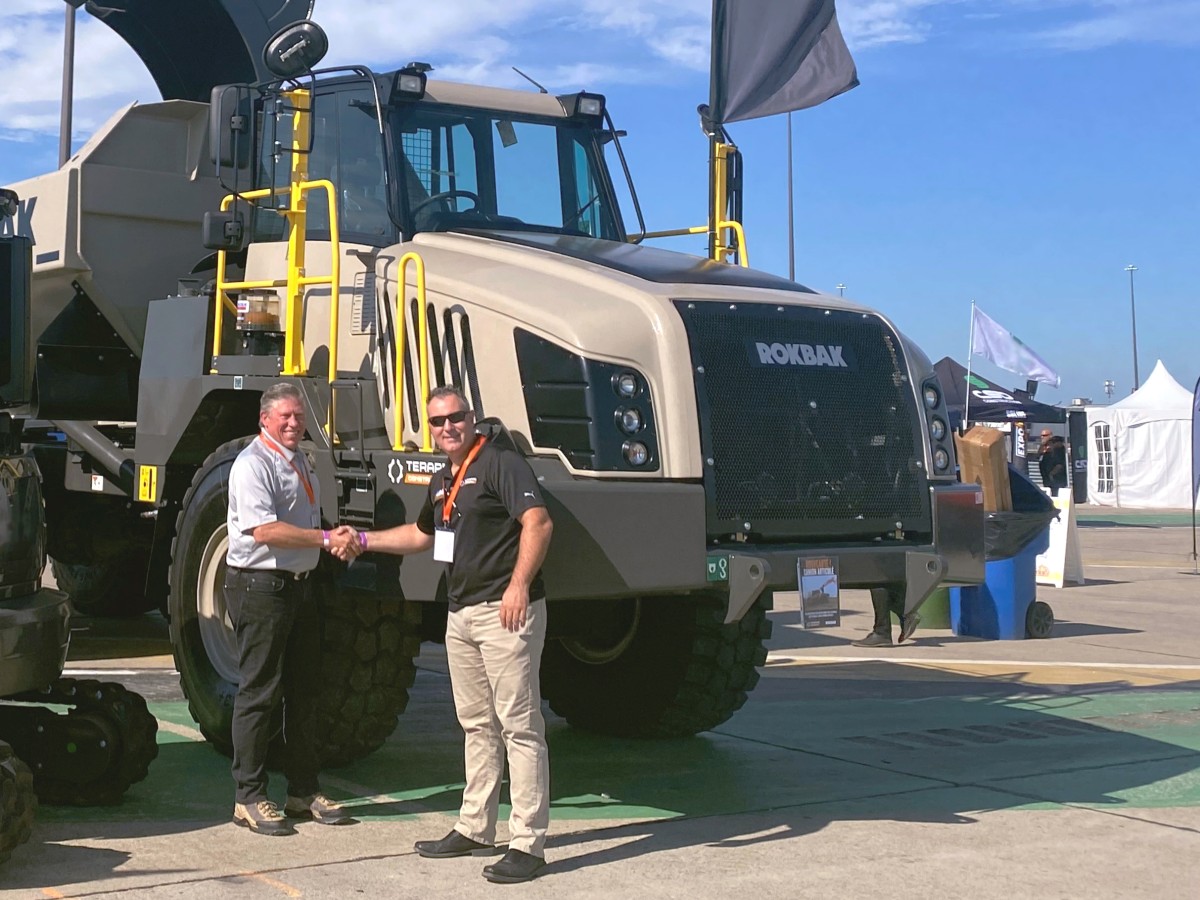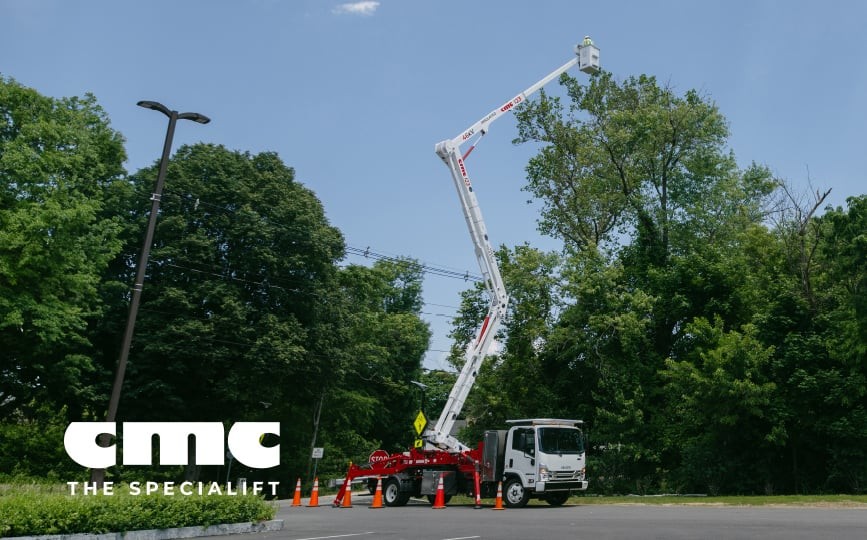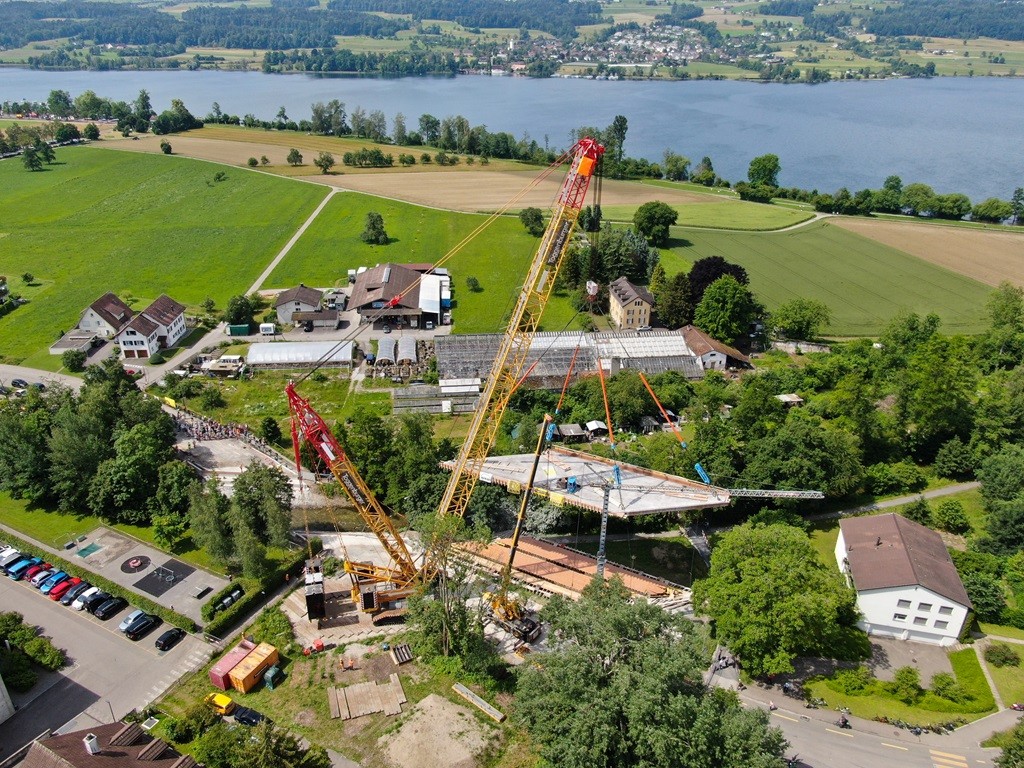Home \ International \ Tadano CC 38.650-1 sets 230-tonne Aabachbrücke bridge down in place
Tadano CC 38.650-1 sets 230-tonne Aabachbrücke bridge down in place
21/10/2024
Pubblicato da Ettore Zanatta
Four assembly technicians and an AC 140 assist crane set up the CC 38.650-1 within a mere two and a half days with an LSL_2 configuration and a 66-meter boom.
The job was a perfect match for the Tadano CC 38.650-1 lattice boom crawler crane’s “collar size”: Winterthur-based Swiss crane service provider Toggenburger + Co AG had to lift and remove parts of the old demolished Aabachbrücke bridge, each weighing up to 150 tonnes, and then set the new bridge and its net weight of 230 tonnes down in place in Niederuster, close to Zurich. Due to the fact that the parallelogram-shaped element was a sensitive load, the maximum permissible forces at the attachment points had to be adhered to without any deviation. In order to achieve this, the Toggenburger team integrated strand jacks into the slinging gear used in order to make it possible to control each line individually so as to distribute the load evenly and prevent damage to the structure.
It took Toggenburger 20 trucks to transport the CC 38.650-1 to the work site on the Seestraße road in Niederuster. Once the crane components were there, four assembly technicians and an AC 140 assist crane set up the CC 38.650-1 within a mere two and a half days with an LSL_2 configuration and a 66-meter boom. And together with a full counterweight consisting of 165 tonnes of counterweight, 50 tonnes of central ballast, and 325 tonnes of Superlift counterweight, the crane was ready to start lifting. “Since space at the work site was extremely tight, the crane’s Vario-SL really came in handy, as it mades it possible to maneuver the Superlift counterweight over terrain that was about a meter higher,” reports Toggenburger Large-Scale Project Manager Manuel Widmer.
While lifting out the pre-cut elements of the old bridge turned out to be simple routine work for the team and the crane, lifting the new deck into place a few weeks later would require significantly more planning and preparation: For starters, the Bongossi mats at the work site had to be extended all the way to the closed-off road so that the crane would be able to travel forward enough in order to position the ballast traverse. While this was being done, a second team used an assist crane to prepare the slinging gear with the strand jacks, which had already been adjusted to the right length in advance based on the calculations made by the experts at Toggenburger and which were to play a crucial role in the job: “It was absolutely imperative for the load on the lines, which were up to 35 meters long, not to exceed 55 or 75 tonnes, depending on the attachment point. So in order not to go over the load limit at the attachment points on the load, we tightened the last 100 tonnes with the strand jacks,” Manuel Widmer reports. After this, the CC 38.650-1 was finally able to safely lift the bridge and its gross weight of 250 tonnes when including the corresponding slinging gear, swing it over the surrounding trees at a radius of 31 meters, and then set it down on its supports with incredible precision. In addition, using the strand jacks came with another advantage for the team: Since the Aabachbrücke bridge has a slight downhill slope, the load had to be placed in a “tilted” position in order to fit into place correctly. And with the hydraulic strand jacks, the different line lengths at the ends of the load could be adjusted precisely during the lift so that they would be just right for setting down the load at the exact angle required.
A total of six Toggenburger employees, including the two crane operators, were involved in the lift. “And they showed that an experienced team with the right crane can carry out even this kind of complex lift safely, reliably, and with absolute precision within the scheduled timeframe,” underscores Manuel Widmer, who most certainly bet on the right “horse” for this project with the CC 38.650-1.

Ultime notizie di OnSite News
Equipments
21/11/2024
SITECH partners with Royal Engineers to create poppy and demonstrate tech offering
The demostration involved creating a ground-level poppy desi...

Earthmoving Machinery
20/11/2024
Strong and stable RA30 trucks carry the weight at New Caledonian mine
Three Rokbak RA30 trucks are delivering exceptional durabili...

Lifting
20/11/2024
Tadano AC 7.450-1 Performs Double Duty in Wisconsin
A cost-saving and versatile solution was already on site - a...

Lifting
11/11/2024
Tadano AC 7.450-1 all terrain crane for the Victoria Tower in Mannheim
Tadano AC 7.450-1 all terrain crane lifts cooling unit to to...

Earthmoving Machinery
08/11/2024
Terapro Construction and Rokbak announce distribution agreement
Terapro Construction will now supply Rokbak articulated haul...

Components
06/11/2024
Rehlko Advances Carbon Reduction in Data Centers
Publication of a market-first environmental declaration for...
Altri International

International
21/11/2024
Kleemann: New compact crusher used for recycling
Impact crusher MOBIREX MR 100i NEO impresses during operatio...
International
21/11/2024
SITECH partners with Royal Engineers to create poppy and demonstrate tech offering
The demostration involved creating a ground-level poppy desi...

International
20/11/2024
Strong and stable RA30 trucks carry the weight at New Caledonian mine
Three Rokbak RA30 trucks are delivering exceptional durabili...

International
20/11/2024
Tadano AC 7.450-1 Performs Double Duty in Wisconsin
A cost-saving and versatile solution was already on site - a...

International
19/11/2024
Liebherr Tower Cranes and John Paul Construction celebrate 50 years of partnership
Irish construction company John Paul Construction is celebra...

International
18/11/2024
The CMC i23 aerial platform: an example of high performances
CMC i23 is designed to maximise operational efficiency in al...








































